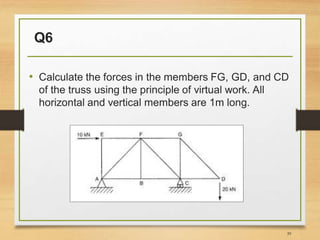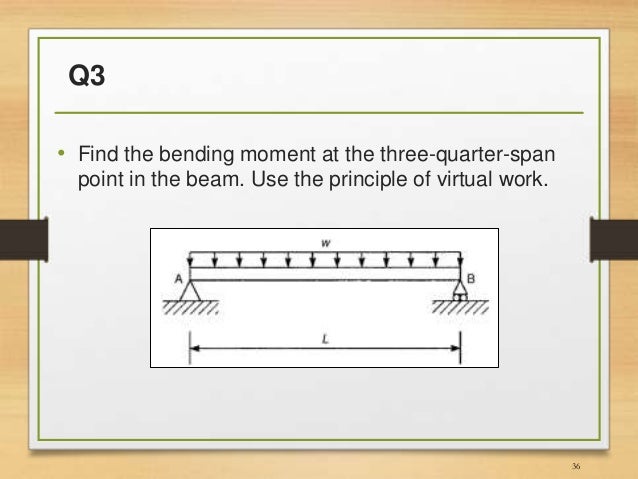
The simple truss shown is hinged at point A and on roller support at joint B. It is important to retain the algebraic sign for each of the corresponding n and N forces when substituting these terms into the equation. Apply the equation of virtual work, to determine the desired displacement. Again assume the tensile forces as positive and the compressive forces as negatives.Ĥ. With the unit load so placed, and all the real loads removed from the truss, use the method of joints or the method of sections and calculate the internal n force in each truss member. The load should be in the same direction as the specified displacement, e.g., horizontal or vertical.ģ. Place the unit load on the truss at the joint where the desired displacement is to be determined. Assume tensile forces as positive and compressive forces as negatives.Ģ. These forces are caused as a result of the application of the real loads only. Analyze the truss using the method of sections or joint to determine the internal force N in each member. The following steps may be applied to obtain the displacement at any joint in the truss using the virtual work method.ġ.

Its value is often taken to have a magnitude of “unity”. Since there is no external force applied at point A, the displacement of point A can be determined by applying a “virtual force” at point A acting in the same direction of the displacement.


Supposing it is required to determine the displacement of the structure at a point A (figure 1) due to the applied external forces. The concept of virtual work can be extended further by considering a structure subjected to a series of external forces P 1, P 2, P 3……P n.



 0 kommentar(er)
0 kommentar(er)
